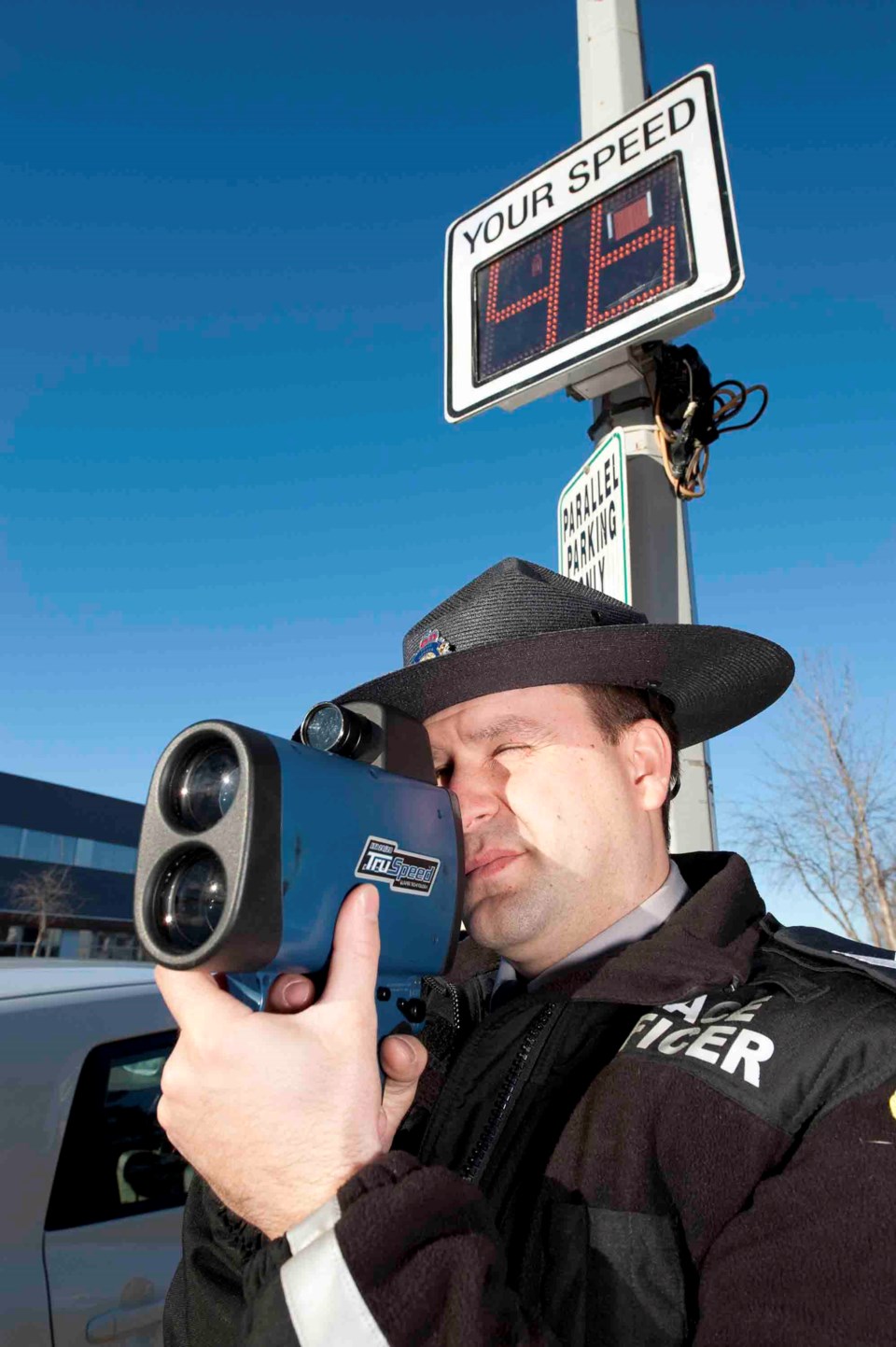Morinville’s mayor says he thinks the town should consider teaming up with its neighbours to run a regional photo radar service.
Morinville councillors voted 5-0 at their March 19 committee of the whole meeting to refer to their May 14 regular meeting a proposal to keep the town’s photo radar contract in place while at the same time exploring an in-house/regional alternative. Councillors Nicole Boutestein and Sarah Hall were absent.
Council voted 4-2 last November to extend the town’s contract with Global Traffic Group Ltd., which runs the town’s photo enforcement program. It also called on administration to bring forth this quarter other ways to do photo enforcement.
The town is also required to re-examine its photo radar program to see if it complies with the province’s new guidelines. Town community and protective services director David Schaefer told council the town might have to move or eliminate one photo radar site on Cardiff Road in order to comply with the new ban on photo radar in transition zones (the areas adjacent to a speed limit sign).
Schaefer said the town has seen significant drops in speeding since photo enforcement began in 2009 despite a rise in traffic. Average speeds on Highway 642 have dropped to between 43 and 46 kilometres per hour from about 68 (the speed limit is 50), with 14 to 16 per cent of all cars there speeding, compared to about 21 per cent in 2009. School zones have also gone from a speeding hot spot in Morinville to a non-issue, with few if any tickets now issued in them. The town issued about 1,870 photo radar tickets last year – a significant drop from the 9,000 sent out in 2009.
The town currently has Global do 25 hours of enforcement a week and can cancel its contract with 30 days notice, Schaefer said. This service is at no operational cost to the town (Global gets a cut of the ticket revenue), has passed several provincial audits and has drawn few public concerns in recent years. Council policy directs the majority of ticket revenue to vehicle, pedestrian and public safety initiatives.
Dropping the contract would mean no new photo radar cash for traffic safety projects, Schaefer said. Drayton Valley also saw a significant spike in traffic problems when it ditched photo radar.
Moving photo enforcement in-house would require more work with the Solicitor General plus cash to get the necessary staff, people, and equipment, Schaefer said. Stony Plain and Leduc are going this route but still haven’t got a system in place after a year’s work.
The town could instead forget about photo enforcement and hire a dedicated traffic cop who would enforce all traffic laws and physically pull over speeders, Schaefer said. That cop would cost up to $90,000 a year, not including the cost of a car, radar gun and up to $32,000 in administrative support. Area governments that have gone this route have also reported spikes in traffic problems afterwards.
Mayor Barry Turner moved to keep the photo radar program for now, as it helps fund safety initiatives and is governed by a strong policy and the RCMP. The provincial election could also bring more changes to photo enforcement regulations. Still, he also wanted to explore an in-house or regional option.
“The main issue or uncertainty I do have with the existing program ... is that incentivization of tickets,” he said, referring to the fact that Global has an incentive to issue more tickets as it’s paid a percentage of the revenue from each.
Making the program government-run could eliminate this problem, and a regional program could be cheaper than a local one, Turner said in an interview.
“At this point, it’s tire-kicking,” he said of the concept, adding he had no idea what a regional photo radar program would look like.




